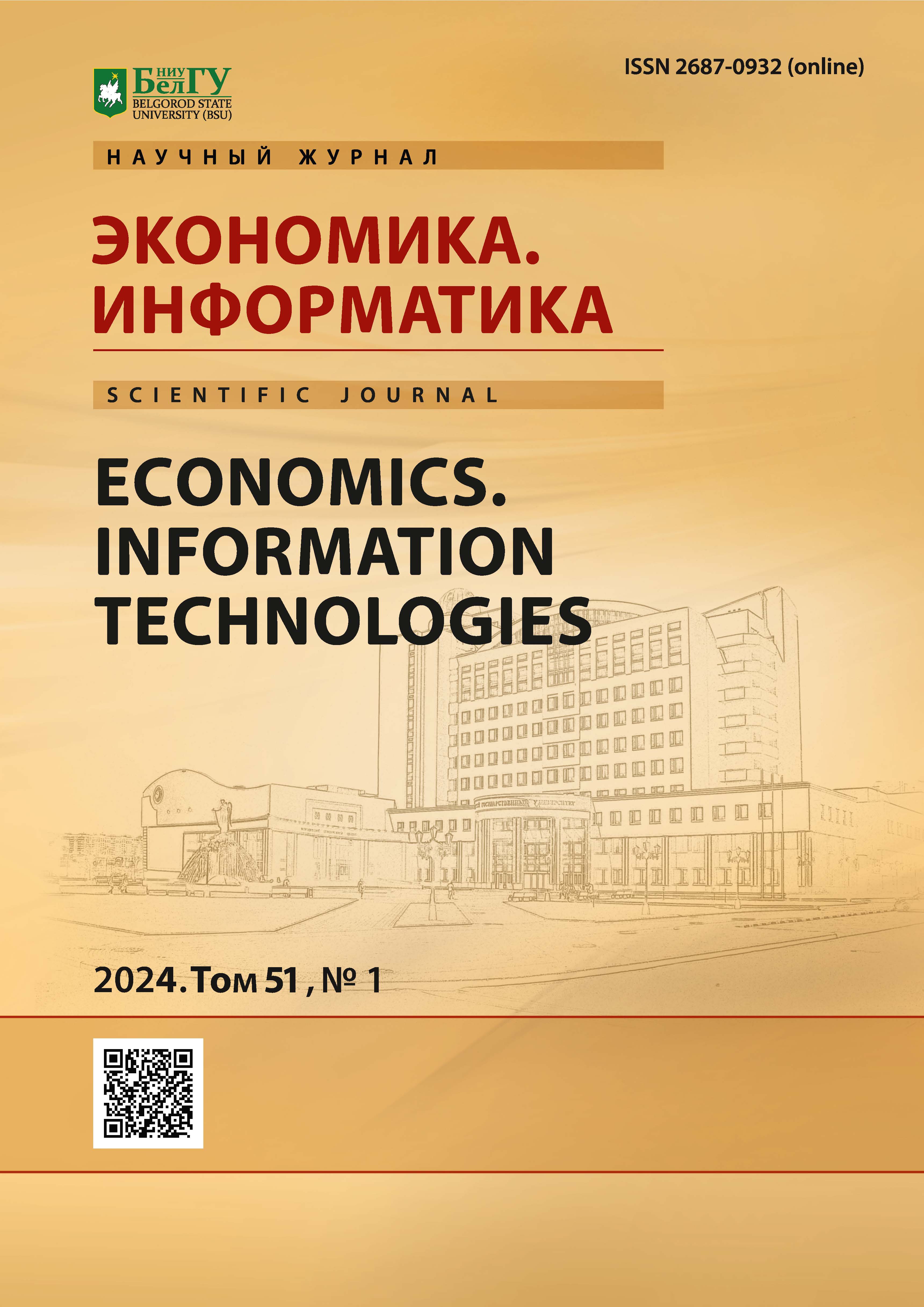Conditions and Prospects for the Development of Cross-Border and Interregional Trade and Economic Cooperation in the Russian-Chinese Border Zone
DOI:
https://doi.org/10.52575/2712-746X-2024-51-1-45-55Keywords:
border regions, development of border regions, cross-border cooperation, border crossings, interregional cooperation, Russian-Chinese border zoneAbstract
The search for additional reserves for the economic and social development of Russian regions is a constant task for the regional management system. The regions of the vast zone of the Russian-Chinese border form a specific spatial perimeter with their own characteristics, problems and factors for accelerating socio-economic dynamics. The problems of regional socio-economic development of the subjects of the Russian-Chinese border are not given enough attention in Russian scientific works due to the scarce nature of the empirical base, the complexity of observing the object itself, the remoteness of the test site from the main research centers and the lack of fundamental developments of a scientific, methodological and applied nature. It is for these reasons that the problems of socio-economic dynamics of the spatial perimeter of the Russian-Chinese border area have not yet received proper scientific and methodological support. Based on this, the purpose of the undertaken research is to obtain reliable empirical estimates that will reveal the prospects for the spatial and economic development of the border regions of the Russian-Chinese border. The study was conducted on the basis of the methodology of spatial analysis of the functioning of borders as elements of the economic framework. As a result of the study, recommendations were formulated to enhance spatial and economic interaction between the regions under consideration. The scarce nature of infrastructure support for the perimeter of Russian-Chinese interregional interaction has been established. The results of the study contribute to the scientific and methodological support of spatial and regional economics and can be used in the development of documents that activate and regulate the socio-economic development of border territories in Russia.
Downloads
References
Список источников
Договор о добрососедстве, дружбе и сотрудничестве между Российской Федерацией и Китайской Народной Республикой. URL: http://www.kremlin.ru/supplement/3418 (дата обращения: 18.01.2024).
Программа создания экономического коридора Китай – Монголия – Россия. URL: https://www.economy.gov.ru/material/file/80c240c6a439ba99e9b254fa9254317f/programma_ekonomicheskogo_koridora_kitay_mongoliya_rossiya.pdf (дата обращения: 18.01.2024).
Федеральная служба государственной статистики РФ. URL: https://rosstat.gov.ru/folder/210/document/13204 (дата обращения: 18.01.2024).
Heilongjiang Statistical Bulletin. URL: https://www.hlj.gov.cn/hlj/c108419/zfxxgk.shtml (дата обращения: 18.01.2024).
Jilin Provincial Bureau of Statistics - Annual Bulletin. URL: http://tjj.jl.gov.cn/tjsj/tjgb/ndgb/ (дата обращения: 18.01.2024).
Joint Statement by the President of the People's Republic of China and the President of the Russian Federation on the development plan of the key Directions of China-Russia Economic cooperation before 2030. URL: https://www.gov.cn/xinwen/2023-03/22/content_5747725.htm (дата обращения: 18.01.2024).
Notice of the State Council of China on Issuing the Overall Plan for the Establishment of Six New Pilot Free Trade Zones Guofa [2019] No. 16. URL: https://www.gov.cn/zhengce/content/2019-08/26/content_5424522.htm (дата обращения: 18.01.2024).
Notice of the State Council on further opening up Heihe and other four border cities to the outside world, Guohan [1992] No. 21 [Электронный ресурс].URL: https://www.gov.cn/zhengce/content/2010-12/27/content_4966.htm?trs=1
Opinions on Actively Developing Border Trade and Economic Cooperation to Promote Border Prosperity and Stability Guobanfa [1991] No. 25 [Электронный ресурс].URL:https://www.gov.cn/zhengce/content/2010-12/23/content_4990.htm
Statistical Bulletin of the Statistics Bureau of Inner Mongolia Autonomous Region. URL: http://tj.nmg.gov.cn/tjyw/tjgb/ (дата обращения: 18.01.2024).
Statistical Bulletin of the Statistics Bureau of Xinjiang Uygur Autonomous Region. URL: https://tjj.xinjiang.gov.cn/tjj/tjgn/ist.shtml (дата обращения: 18.01.2024).
Wang Ye. Research on the development of border cities in Northern China [D]. Shaanxi Normal University, 2013.
Список литературы
Бийе Ф. 2014. Современность в пространственном измерении: открытые рынки, герметичность и вертикальность в двух приграничных городах России и Китая. Экономическая социология, 2: 76–98.
Дорошенко С.В. 2020. Приграничные регионы России и Китая: проблемы и приоритеты развития. Россия: тенденции и перспективы развития, 15-1: 662–668.
Li Qi. 2010. China and Central Asia: The foreign-related characteristics of the border port Economy--A Bird's eye view of the development of the Khorgos Port in Xinjiang. Journal of Xinjiang Normal University (Philosophy and Social Sciences Edition), 31(04): 25–31.
Zhu Mengmeng, Lin Zihua. 2022. Status quo and optimization strategy of Sino-Russian border trade cooperation[J]. Open Herald, (01): 97–103. DOI:10.19625/j.cnki.cn44-1338/f.2022.0001.
Abstract views: 306
Share
Published
How to Cite
Issue
Section
Copyright (c) 2024 Economics. Information Technologies

This work is licensed under a Creative Commons Attribution 4.0 International License.


